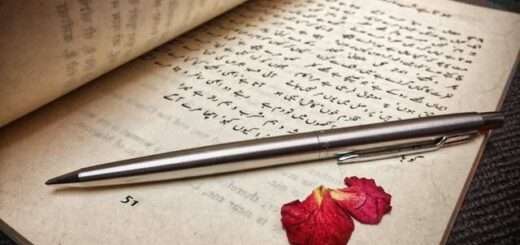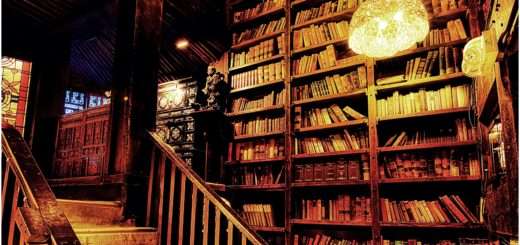Amrita Pritam – A short Biography by U. Raja
Amrita Pritam (1919 – ) is one of the most prominent female writers and poets of our era. She has published over seventy books – novels, short stories and poems. She has been elected a fellow of the Sahitya Akadme, in India, as one of the twenty-one immortals of literature. She has been honored with the Padma Vibhushan, the Jnanpith Award and the Padma Shree. She also received three D Lit degrees from Delhi, Jabalpur and Vishva Bharti Universities.
Amrita Pritam was born into a Sikh family of Gujranwala. She was the only child of a school teacher and a poet. Her mother died when she was eleven. Amrita married at the age of 16, and divorced in 1960, at the age of 41.
At the time of Partition, in 1947, Amrita migrated to Delhi. After migration, she started writing primarily in Hindi, instead of her native Punjabi. She has authored two autobiographies, titled, “Rasidi Ticket,” and, “Aksharon kay Saayee.” Her novel, “Pinjar” (Skeleton), about the agonies of Partition riots, was recently turned into a famous movie by director Chandra Prakash Dwivedi. The French translation of this novel received the La Route des Indes Literary Prize in France, while its film adaption received the Screen and Zee Telefilms Award.
In 1966, Amrita started the monthly Punjabi journal called, “Nagmani.” Many future Punjabi writers were published in this journal, which eventually closed down in 2003, after 36 years of publication.
Outside the above-mentioned achievements and accolades, to Punjabi speakers, readers and writers, Amrita’s claim to fame is her impromptu capturing of the condition of Punjab at the time of partition in her, “Ode to Waris Shah.” Legend has it that Amrita authored this poem, on her migratory train ride, from Gujranwala to Delhi, in 1947, while observing the violence in the surrounding area.
“Ode to Waris Shah,” is a call to the legendary Punjabi poet, Waris Shah – with whom Amrita shares a common birthplace of the area surrounding Gujranwala – in such an intense, painful and descriptive manner that Waris Shah would have been proud to have claimed this work as his own. The Punjabi similes, analogies, hyperboles and metaphors used in tying the situation at hand, with the village culture of Punjab and the literary work of Waris Shah rival the best verses of the legendary Punjabi Sufi poets.
Aaj aakhaN Waris Shah nuuN, kitoN kabraaN vichchoN bol,
te aaj kitab-e ishq daa koii aglaa varkaa phol
Today, I call Waris Shah, ‘Speak from inside your grave!’
And turn, today, the book of love’s next page
The translation of this poem has been an interesting six month journey through the Punjabi language and Punjabi culture; starting from the fact that it was impossible to find an Urdu/Persian text of the original poem, despite efforts in India, Pakistan and Canada. In addition, many of the words and terms used in the poem are part of the, “pure,” vocabulary of Punjabi, which has now, unfortunately, been replaced by its slang street version in Pakistan’s Punjab. This makes it even more difficult to translate the already, “untranslatable” Punjabi phrases. In addition, the cultural and agricultural similes are based on village customs, thereby making them quite difficult to unravel and comprehend.
Indeed, some of the analogies used in this poem rival the best Urdu works of Mirza Ghalib – the grandmaster of analogies, similes and metaphors.
The references to Waris Shah’s work are simple and obvious. Waris Shah’s (1722 – 1798) Heer is considered the Bible of Punjabi poetry. It is believed to be based on the tragic, but true, story of two 16th century lovers – Heer and Ranjha. Legend has it that Waris Shah subtly interleaved, into his interpretation of this classic, his own love for a girl named Bhag Bhari.
Amrita Pritam’s, “Ode to Warish Shah” is filled with allusions to Waris Shah’s legendary work. She refers to Heer as the, “daughter of Punjab” (dhii Punjab di), and symbolizes Waris Shah’s rendition of Heer’s story as a depiction of a tragedy, written as a result of Heer’s wailing grief; asking Waris Shah to step out of his grave and hear the Partition cries of a million Heers. The poem references many of the main characters and symbols of the Heer legend – Ranjha, his flute, his brothers, and Qaido (the villainous Uncle), comparing the attitudes of the Punjabis at the time of Partition, to the evil acts of later. The poem ends with the poet pondering whether another Waris Shah will ever appear to handle the situation at hand.
While the analogies to Heer are quite easy to decipher, not so obvious, and thus difficult to understand, are the references made to local Punjabi village customs and culture. These start from the sixth couplet and continue till the twelfth. Anyone interested in understanding the Punjabi language, its poetry, and its linkages with the land would be well-advised to go through the struggles of translating these verses













